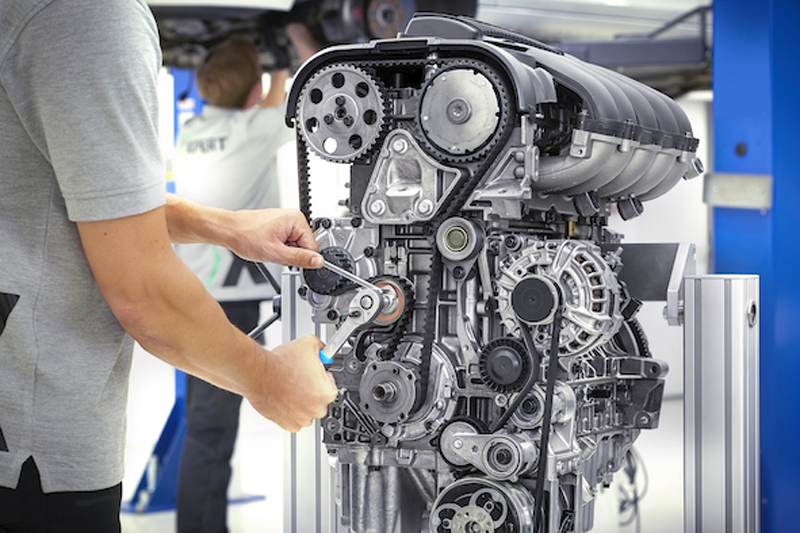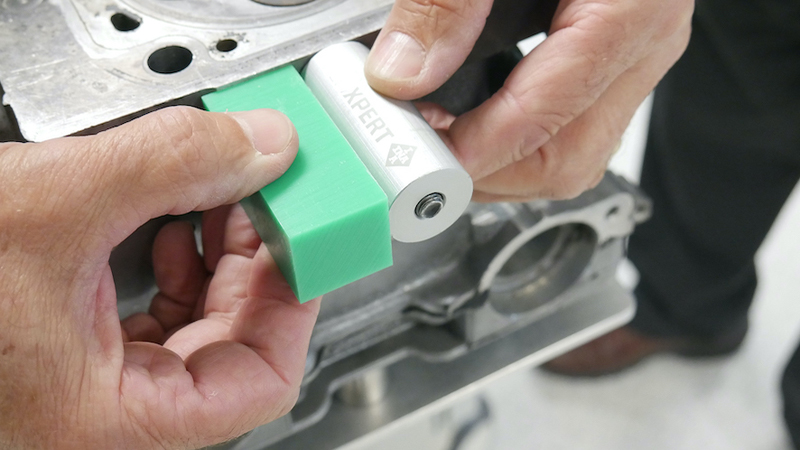
The Schaeffler REPXPERT team has produced two INA technical videos on how to install the timing belt tensioner on popular TDI engines used in multiple VAG applications.
Both videos have been designed to be short and to the point, but still containing all the critical instructions and specifications needed to carry out a professional replacement.
One of the most common causes of premature belt system failure on 1.9 and 2.0 TDI engines is said to be the incorrect replacement of the tensioner stud. The stud is steel, whilst the cylinder head to which it attaches is alloy, which can create issues.
Extreme care needs to be taken to ensure there is no damage to the stud hole or thread, and any aluminium deposits are removed so that the stud can be fully inserted. If the stud extends too far from the block, it can act in a similar way to when you ‘twang’ a ruler on the side of a desk – the more it protrudes the more vibration is created.

Also, if the stud is not installed absolutely square to the engine block, the tensioner will be misaligned, causing excess friction, vibration and premature failure.
The tensioner stud replacement video shows how both the installation angle and depth of the stud can be checked by using the INA stud tool, available from the REPXPERT bonus shop. Technicians using the tool to confirm the accuracy of the stud installation can then move on to the tensioner itself, which also needs to be fitted with extreme care.
The tensioner setup video highlights the fact that there are two interchangeable tensioners originally fitted by VAG to 2.0 TDI engines, but that the installation procedure is slightly different depending on the manufacturer – Litens or INA. Currently, some data providers are only showing the setup procedure for the OE Litens unit, but as both of the popular INA timing belt kit options listed for the engine obviously contain an OE INA tensioner, following the correct INA setup instructions is critical.









